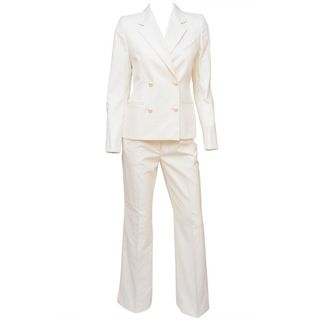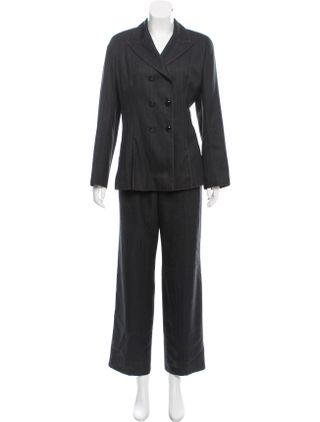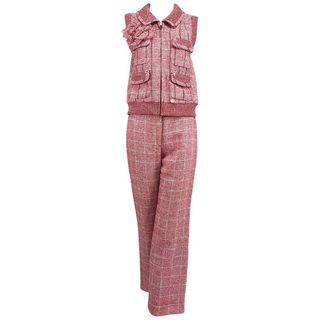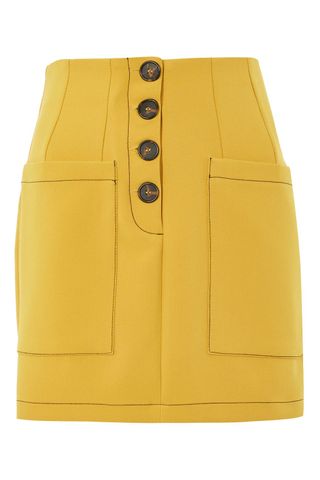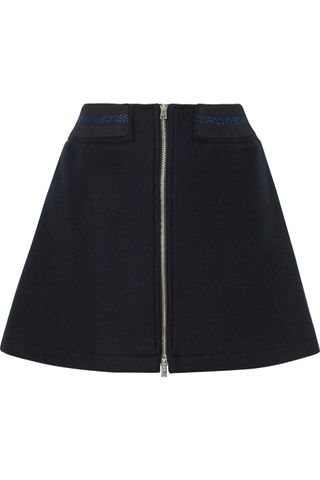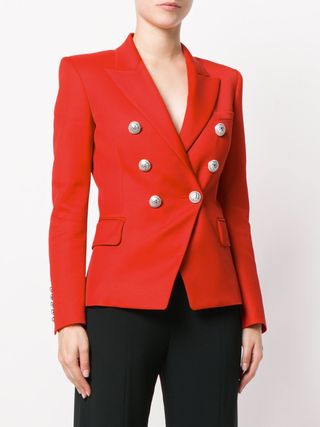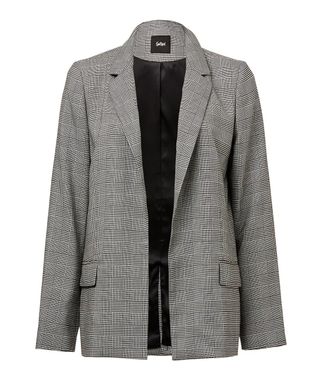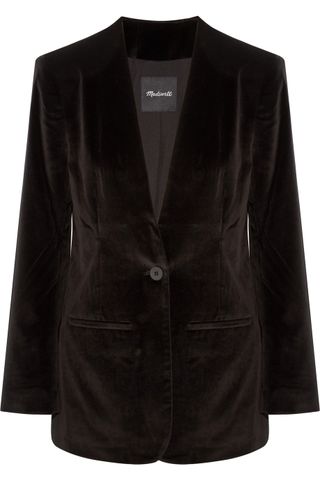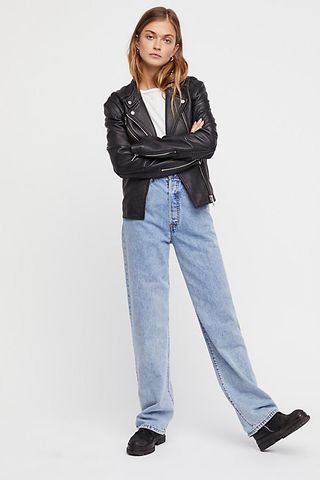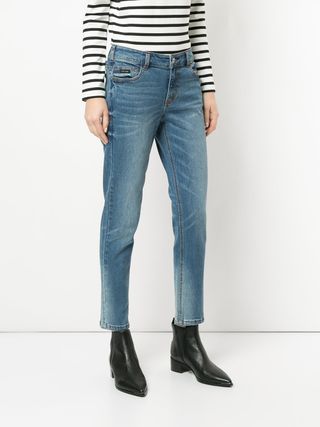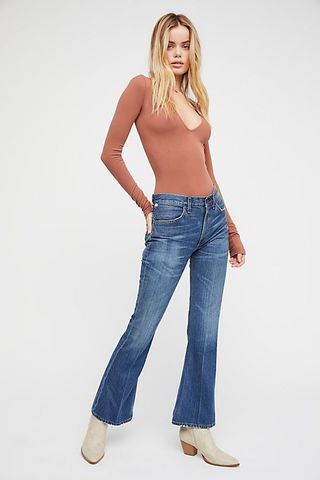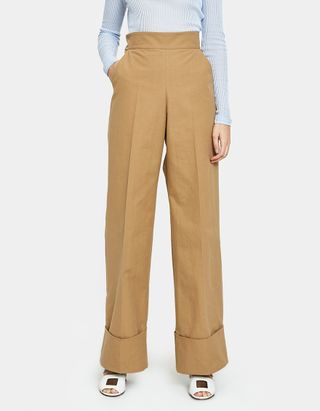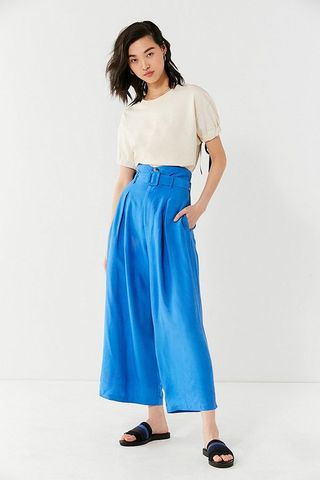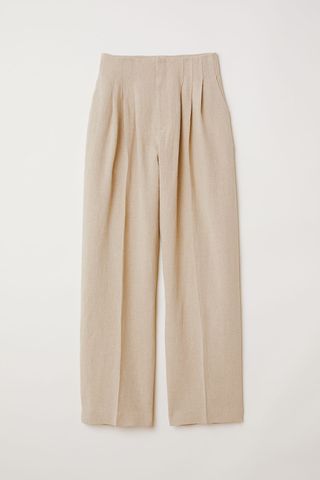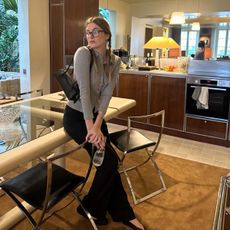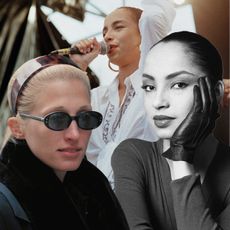These 6 Fashion Trends Helped Women Stand Up for Feminism Throughout History
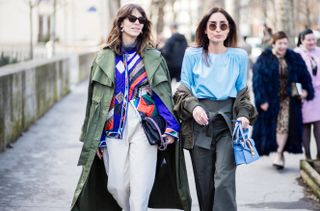
While trends come and go, there is a certain staying power when it comes to meaningful fashion. As recent runway shows have reminded us, fashion can (and should) play a part in inciting social change. Though it’s amazing to see designers taking a stance on issues ranging from sexual harassment to environmental destruction, the correlation between fashion and feminism is perhaps the most immediate example. Because fashion and feminism both revolve around identity, it makes sense that the two are interrelated.
In fact, fashion has always been a means by which women can stand up for feminism. From mini skirts to power suits, there have been a number of styles that re-shape societal understandings of womanhood. While fashion is—to an extent—reflective, it is more importantly a catalyst for change. By changing what we wear, we have the power to change others’ perceptions of us, and in the fight for gender equality, isn’t that essentially the goal? This is no new concept; women have been using fashion as a feminist tool for hundreds of years. Keep reading to learn about the trends which have inspired (and been inspired by) feminism throughout history.
Bloomers
First lauded by the feminist writer Amelia Bloomer in the 1800s (hence the name), the long loose pants were a more comfortable and practical option to women's clothing of the time. As the Encyclopedia of Fashion notes, bloomers "were part of a movement toward more practical clothing for women, and soon became closely identified with suffragists". Though the pants were ridiculed, they became commonplace to wear under skirts, rather than a less comfortable petticoat.
Chanel Pantsuits
Though she wasn’t the first one to design suits for women, Coco Chanel did pioneer the adoption of men’s style in women's clothing. "She designed sophisticated clothes that were elegant yet comfortable. The symbol of this ideal is the 2 piece suit, which Coco created taking inspiration directly from the suits of her lovers," Sarah Bimbi writes for Vogue. "They represented masculine power since they were worn by the most important and richest men."
Miniskirts
By showing off a little more leg, women proved that they weren’t afraid to embrace—and flaunt—their femininity. "Trends aren't 'reflective' of change, but rather constitutive of change," fashion historian Deirdre Clemente shared with Bustle. Coinciding with women becoming more independent and liberated in the 1960s, the miniskirt exemplified the ideological stances that increasing numbers of women were embracing.
Blazers
In the 1980s, as women were becoming more integrated in traditionally male-dominated workplaces, blazers became a popular feminist staple. By mimicking the styles of men’s work-wear, women’s power suits symbolised the fact that women could in fact be powerful as well—what a concept, right? With large shoulder pads and oversize fits, blazers made the statement that despite gender, women in the office are no different than the men.
Jeans
Jeans are an obvious outfit staple these days, so it can be easy to forget that they were originally created for men’s labour. During the 1950s, however, the staple became synonymous with teenage rebellion. While it was a statement for any young person to wear denim, "jeans on a female body signified power, rebellion, and strength", Fashionista reports.
Wide-Leg Trousers
As reported by Refinery 29, "this trend stands in stark contrast to earlier ways women and girls were instructed to dress." Reminiscent of the early iterations of trousers seen on women (we’re looking at you, bloomers), wide-leg pants have been a favourite amongst women since they came into style in the 60s and 70s. In addition to being comfortable, wide-leg pants represent feminist ideals which encourage women to dress for themselves rather than for others. Though they may have once been considered less flattering than more classically feminine trousers, the wide-leg variety works against the idea that women should dress in a certain way just because it appeals to men.



